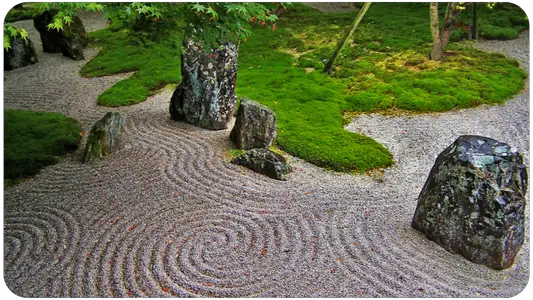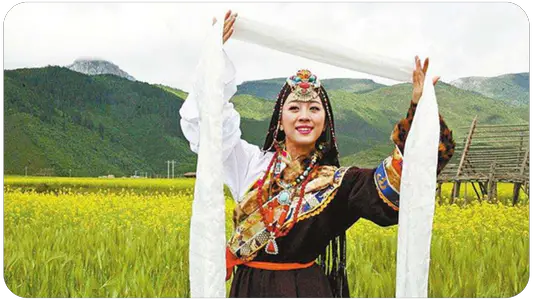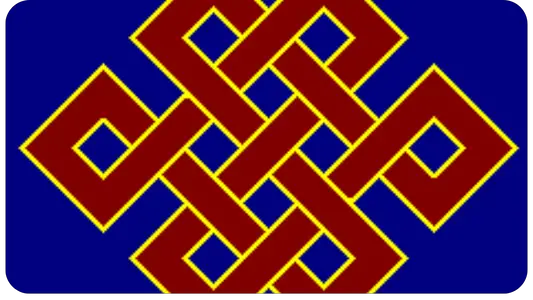As Shaolin Kung Fu (Chinese 少林功夫, Pinyin Shàolín Gōngfu, W.-. G. shaolin kung fu - "Shaolin skills"), Shàolín Quánfǎ (Chinese 少林拳法 - "Shaolin fist skills"), or more briefly Shàolín Quan (Cantonese sil lum kuen "Shaolin fist") are used to refer to more than 360 Chinese martial arts styles (wushu) that relate in some way to the Chinese Shaolin monastery. If the term is understood in a narrow sense, it includes only the techniques that legends say were developed at the founding site, the Buddhist Shaolin Monastery on Mount Song Shan in Henan Province, China. In a broader sense, it also includes styles that are said to have originated from other monasteries associated with Shaolin or from wandering monks.
Shaolin Kung Fu is included in the intangible cultural heritage of the People's Republic of China (No. 289).
History
Origin of the monastery and the martial arts
For details about the Shaolin Monastery see the detailed article: Shaolin Monastery.
Shaolin Monastery was founded in the Northern Wei Dynasty (386-534) by Emperor Xiaowen (r. 471-499) in 495.
The first references to dueling in Shaolin Monastery are found in the Xu gaoseng zhuan (Continuation of Biographies of Famous Monks), written in the early 6th century. This work describes how a monk named Sengchou challenged his fellow monks to a contest.
In the course of it, he ran horizontally along a wall, jumped to below the temple roof, and lifted very heavy weights. Moreover, he was so nimble and agile with his fists that everyone obeyed and submitted to him.
However, it is questionable whether, based on these statements, one can already speak of a Shaolin martial art at this time, since there is still no evidence of an existing system or a specific school.
The second important figure often associated with the development of Shaolin martial arts is the Indian monk Bodhidharma (Chinese 菩提達摩, Pinyin Pútídámó, Japanese Bodai-Daruma or Daruma). Bodhidharma means "enlightened by the teachings."
The true name of this Indian patriarch is unknown. He is said to have stayed at the monastery from 527-536. Although no direct relationship of Bodhidharma to martial arts can be proven in the sources, he is credited with the development of the five animal styles (wuquan).
In addition, a sword form (Damojian), a stick form (Damozhang), and the 18 hands of luohan (Shiba luohan shou) have been named after him or traced back to him.
Furthermore, he is said to be the author of the works Yi Jin Jing ("Transformation of the Tendons and Ligaments," various breathing techniques to improve endurance) and Xi Sui Jing ("Ablution of the Mark," to develop self-discipline and inner strength).
The attribution of Shaolin martial arts to Bodhidharma has been repeatedly called historically unprovable by martial arts historians, first by Tang Hao, who showed in 1930 that the book Yi Jin Jing, on which this attribution is based, is a forgery.
Development in the Tang Dynasty
The oldest historical evidence of Shaolin Monastery's involvement in martial conflicts is a stele from 728 that describes its involvement in two historical events, namely the monastery's defense against bandits in 610 and its participation in the Tang Dynasty's victory over Wang Shichong at the Battle of Hulao in 621.
In addition, Tang Dynasty patronage of the monastery is mentioned. However, there are no references to specific martial arts skills of the Shaolin monks.
Sources from the time of the Ming Dynasty
Until the 15th century, no other evidence of martial activity by Shaolin monks exists. From the 16th and 17th centuries, at least 40 sources exist that report special martial arts skills of the Shaolin monks.
According to these sources, in the mid-16th century, military experts from throughout the empire ruled by the Ming Dynasty traveled to Shaolin Monastery to study these martial arts skills. In particular, the sources speak of unarmed combat forms, of spear techniques, and of stick fencing techniques.
The oldest surviving manual on Shaolin fighting techniques, the "Treatise on the Original Shaolin Stick Fighting Method," was written around 1610 and published in 1621. The author, Cheng Zongyou, reports in the source what he had learned during his stay of more than ten years at the Shaolin monastery.
In the most detailed source of the 16th century, geographer Zheng Ruoceng relayed that in 1553 one Wan Biao of the Nanjing Military Commission hired monks as fighters against marauding pirates, among them monks from Shaolin Monastery. Monk warriors were involved in at least four battles, according to this source.
An extensive reform was carried out by the Shaolin monk Jue Yuan in the 16th century. From then on, the system included 72 exercises, which included punches (Da), kicks (Ti), throws (Shuai), grips (Qinna) and methods of stimulating vital points (Dianxue).
The exercises are known by various names, such as Di-sha-shou ("Devil's Hand") or Zuo-ku-shu ("Art of Painful Forcing"). He also elaborated Bodhidharma's martial arts virtues into the "10 Rules of Shaolin Quanfa", which are the basis of today's dojukuns.
To further perfect the system, Jua Yuan traveled the country in search of martial arts experts. Together with his doctor, he was able to get Bai Yu Feng to work with him, which eventually led to the five animal styles.
These exercises were often modeled on the movements of animals from Chinese astrology, because it was hoped to acquire instincts and skills of the imitated animal species. A total of 170 actions were distributed among the following types of movements, the so-called Wuqinquan ("Five Animal Fists"):
Dragon (long) - techniques for mental development (a kind of "mental training").
Snake (she) - stretching techniques
Tiger (hu) - techniques for strengthening bones and muscles
leopard (pao) - training of speed, coordination and endurance
crane (he) - techniques for general strengthening and vitality enhancement
Principles of traditional Shaolin martial arts
Shaolin martial arts are taught today in an unmanageable variety of schools and styles around the world. Traditionally oriented schools seek to emphasize the following techniques and principles in contrast to modern schools that focus on modern wushu propagated from China:
Shaolin is a martial art that requires physically demanding and repetitive movement exercises.
Shaolin is not a sport. Shaolin has no dance or peking opera moments.
Shaolin does not focus on self-defense, but on movement meditation. Therefore, some exercises are not applicable to combat situations, as they are only for strengthening the body and mind.
Shaolin martial arts is closely related to Wu De, the martial arts morality.
Shaolin cannot be practiced as competition or sparring, as its techniques are designed to seriously injure or even kill the opponent.
Shaolin has no graduations (dans) such as different colored belts. Students learn and improve continuously to improve their skills, not to achieve a higher degree.
Current Situation
Three phenomena characterize the current situation of Shaolin martial arts: the representation and further development of Shaolin martial styles and traditions in the cultural discourse of the martial arts film industry, which is primarily dominated by Hong Kong;
the state-sponsored revival of Shaolin martial arts in China and from China; and the worldwide further development of Shaolin martial arts in individual schools, most of which take a historicizing approach.
Influence of the "Eastern
Many performers in so-called Easterns are or were outstanding exponents of Shaolin-based martial arts styles. Their screen presence has a retroactive effect on the perception and development of current martial styles (Bruce Lee, Jet Li, Jackie Chan).Shaolin Martial Arts
China
During the Cultural Revolution, the Shaolin monks were expelled from the monastery. The Chinese government has since recognized the tourist and folklore value of the Shaolin tradition and allowed monks back into the temple.
In 1999, the prayer monk Shi Yongxin was enthroned as the abbot of the monastery with the approval of the Chinese Communist Party and appointed a deputy to the Chinese National People's Congress. In addition to numerous activities to revive Shaolin culture, he also made a name for himself with the highly controversial demolition of Shaolin Village.
Until 2001, there were numerous martial arts schools in the immediate vicinity of the temple, which had little connection to the temple, but adorned themselves with the name "Shaolin".
On the one hand, this promoted the temple's fame, but from the point of view of the abbot Shi Yong Xin, it damaged the traditional values. In September 2001, in agreement with the government of the People's Republic of China, he had almost all the wushu schools in Shaolin expropriated and demolished.
Although the affected schools were compensated with corresponding plots of land in nearby Deng Feng (Chinese: 登封), numerous schools were evicted against their will.
Their properties became fields or grasslands to a good extent. Only the state Wushu school "Wushu-Guan" was allowed to remain. It was built, among other things, to give wushu lessons to foreigners.
Other Countries
Partly because of the repressive measures against monasteries and martial arts schools during the Chinese Cultural Revolution, many Shaolin martial artists also went abroad and developed their styles there.
This historical background is one reason for the fierce controversies with the new Shaolin representatives from China.
The state promotion of the Shaolin tradition has not remained without consequences internationally: in 1992 Master Shi Yan Ming emigrated to the USA while he was on a demonstration tour of the Shaolin monks.
He founded a Shaolin temple in New York City. In response, the Chinese government and Chinese temple established their own Shaolin temple in New York City in 1996.
Temple Foundations:
1992: New York City, under Master Shi Yan Ming.
2000: London, under Master Shi Yanzi.
2002: Vienna, an offshoot of the New York City temple (Grandmaster Shi Yan Ming), led by Shi Heng Xin.
2005: Hong Kong, under Master Shi Yan Wang (Shaolin Yi Jin Jing Association).
2005: Berlin, an offshoot of the temple under Abbot Shi Yong Chuan.
2011: Vienna with Shaolin Temple Austria, an offshoot of the temple under Grandmaster Shi Yan Liang.
Related martial arts styles
North
Tang Lang Quan (Mantis Kung Fu)
South
Hung Kuen (Hung Gar)
Wing Chun
Weng Chun
Martial art styles from other countries
Kuntao from Indonesia





